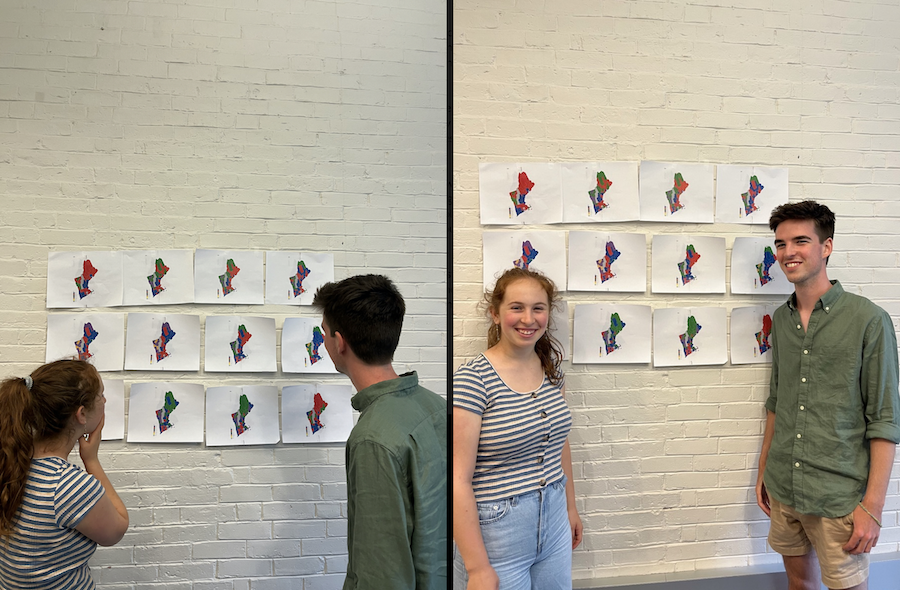Professor and Students Look for Historical Trends in Voting Behaviors
By Rebecca GoldfineMath majors Samara Braverman ’24 and Finn McGannon ’23 are analyzing election data to see whether different jurisdictions around the world tend to vote in predictable patterns over time based on deep cultural roots.

Their work is part of a larger project overseen by Associate Professor of Math Jack O’Brien, who has developed a statistical model that can parse historical election results to cluster regions that show consistent voting behavior.
O'Brien said these underlying patterns might transcend partisan politics or party mechanics of individual elections, and instead reveal the historical cultures that have given rise to these trends.
His research is in part inspired by an intriguing political theory outlined by journalist Colin Woodard in his book, American Nations: A History of the Eleven Rival Regional Cultures of North America. Woodard critiques common analyses of American political divisions and party affiliations that focus on differences between rural and urban populations, education level, or racial identity. He argues instead that political beliefs, such as what the role of government should be or individual autonomy, are rooted in regional differences shaped by the cultures of the immigrants who settled them, such as the Quakers, French peasantry, or English slave owners.
The project also takes advantage of the vast amount of data being collected by democracies around the world. “Election data abounds. Over the past decade, cities, states, and countries have digitized more and more of their records,” O'Brien said. “However, the methods we have for political analysis are decidedly not ready for what this new torrent of data can tell us about the origins and structure of our political configurations. This project is about beginning to fill that gap.”
This summer, Braverman and McGannon are working with distinct data sets: McGannon is focusing on Switzerland’s referenda outcomes between 2010 to today. (The country keeps meticulous public records, unlike the United States, he said). Braverman, meanwhile, is working on US congressional elections between 1840 and 1972.
If O’Brien’s model shows consistent results across different data and time, Braverman said “it could be an effective tool for understanding why and how people in the US vote the way they do.” She added that the findings might also improve political polls, generating more accurate results with smaller surveys.
“I am very interested in contributing to this research because better and more widespread polling would help allow for politicians to more effectively direct funds in their campaigns and reduce unnecessary campaign spending,” Braverman said in her proposal.
“I care deeply about many issues in government and campaigning, and, as a prospective math and government double major, I would love to combine these two interests.”
McGannon said the project’s interdisciplinary nature—it combines coding, statistics, history, and politics—suits them both. Besides taking statistics with O'Brien, the two friends last semester took Professor of Government Michael Franz’s class Public Opinion and Voting Behavior. “We're jumping onto an existing project, but it fits well with the intersection of our interests,” he said.